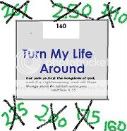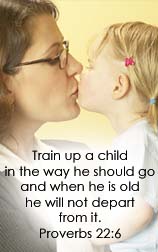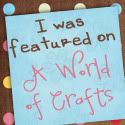Once again we have had the opportunity to review a product from Memoria Press, a company that is pretty well known in homeschooling circles, especially by those who adhere to the classical view of education. While our core curriculum has a classical influence, I tend to be eclectic when it comes to picking curriculum for the children. That said, we have really enjoyed all of the classical products we have reviewed from Memoria Press in the past. I actually just looked back and realized that since 2015 we have reviewed at least one product from Memoria Press a year. This year and last year, we have reviewed two. This time around, I received a set of three books appropriate for 1st through 3rd graders. We received Simply Classical Writing Book One: Step-by-Step Sentences (Bible Story Edition) and Simply Classical Writing Book Two: Step-by-Step Sentences (Bible Story Edition) with Teacher Key by Cheryl Swope.
Just to clarify, seeing as I was a bit confused when we first received our materials, the Teacher Key is just for Book Two. There is no Teacher Key for Book One, which is fine, as there is really no added guidance needed beyond the notes at the beginning of the book. I just wanted to make sure this was understood.
In addition to the set, you will also need a book which contains an introductory and/or comprehensive collection of Bible stories for children. For Book One, A Child's Garden of Bible Stories is recommended, and for Book Two, The Story Bible is recommended. However, it is stated that "any comprehensive collection of Bible stories" can be used, or you can even read directly from the Bible, just make sure to correlate the readings. We were able to find a storybook Bible at the library that has fit pretty well so far, though sometimes we have found that details mentioned in the student guide may vary a bit from what we read.
Let's take a look at each of the books in the set.
I have been using Simply Classical Writing Book One: Step-by-Step Sentences (Bible Story Edition) with Harold, my 1st grader.
This softcover student book is 118 pages in length and contains 34 weeks worth of work. Prior to the lessons you will find a couple of pages of Teacher Notes and four pages of Rules About Sentences which are to be taught to the child. The lessons themselves are all three pages in length and follow the same format.
Each lesson has a title page with a simple line illustration followed by the "Directions to Follow Every Day." These directions remain the same throughout the entire book.
Each lesson has the child applying the rules by using three colored pencils. The green pencil is used to circle the beginning capital letter, the red pencil is used to underline the ending mark, and the blue pencil is used to circle proper nouns.
It is recommended that the "Decodable Sentence" and "Read-Aloud Sentence" be completed on Day One.
And on Day Two the student should work on "Create a Sentence."
Then on Day Three the "Challenge Sentence" is to be completed.
And finally, on Day Four, the child is to do "Illustrate" and "Describe Your Drawing."
At this rate, one story is completed per week. However, if your child is finding this pace too easy, you could always accelerate the pace, perhaps taking two, or only one day for each story, so you could fit two or more stories in each week.
I decided to stick with the recommended pace, mainly because Harold does have other writing to do each day, and I don't want to overwhelm him as he does tend to balk at too much writing.
The book concludes with an Appendix which contains a Certificate of Merit to be given to the child at the completion of the book, and reproducible templates for extra practice.
As we make our way through the book, we will read stories from both the Old and New Testaments. The stories shared are familiar stories, stories that I have found are typically shared with children. We start at Creation, moving on through stories of Adam & Eve, Noah, Abraham, Issac, Joseph, Moses and the Exodus. Then we move into a couple of stories of David, one as a boy, the other as king. There are two stories regarding prophets: Elijah and Daniel. Then, we move into the New Testament. There are three stories from the nativity, then we move into stories of Jesus as a man, performing miracles and teaching. The book concludes with a few stories from the last week of Jesus earthly life, his death, resurrection, and finally his ascension to heaven.
Now, let's look at Book Two:
I have been using Simply Classical Writing Book Two: Step-by-Step Sentences (Bible Story Edition) with Hannah, my 3rd grader.
This softcover student book is 158 pages in length and also contains 34 weeks worth of work. Prior to the lessons you will again find Teacher Notes and the four pages of Rules About Sentences which are to be taught to the child. The lessons themselves are all four pages in length and follow the same format, though these lessons are different than Book One. The students using Book Two have moved beyond simply writing sentences, and are working on learning different grammar and mechanics skills.
Each week there are four lessons: A, B, C, and D.
Lesson A has a child apply the rules for sentences along with figuring out which one of three given sentences is the main idea, and which two are details. Children are to use colored pencils to mark the main idea, the same way they do in Book One, though there is an additional color being used, yellow, to underline the main idea.
Then they are to copy the sentence.
Lesson B has the child work on grammar and mechanics skills. The children are reminded in each lesson that, "Good writing follows the rules of language with great skill."
As a student works through the book they will focus on the following:
- The Sentence (Fragment vs. Sentence, Statement, Question, Exclamation)
- Nouns (Common Nouns, Proper Nouns, Nouns in a Sentence)
- Pronouns (Male Pronoun, Female Pronoun, All Pronouns)
- Verbs (Past, Present, Future)
- Agreement (Articles, Number, Person)
- Commas & Apostrophes (Commas for Lists, Phrases, and Date, Ownership, Contractions with Pronouns)
- Synonyms & Antonyms (Synonyms, Antonyms, Choosing a Good Word)
- Describing (Adjectives, Adverbs, Painting a Picture with Words)
- Organizing (Organizing, Topic Sentence, A Good Paragraph)
Here is a look at Hannah's work from Week 4 where she was learning about exclamations.
There are also review weeks included throughout the book. Children will review in weeks 11, 12, 22, 23, and 33. Week 34 is a final assessment.
Lesson C has the student choosing words to create a descriptive sentence related to the week's Bible story. First they choose an adjective to describe a noun, then they choose an adverb to describe a verb. Next they join the two parts, still only writing the adjective and adverb. Finally, the student is to write the entire sentence they created.
Lesson D has the child illustrate the story and write a couple of sentences to describe the drawing.
There are four different suggested teaching schedules. You can choose to take one, two, three, or four days to complete the "week." We have been working on the Three-Day Schedule as I have two specific days where I have "mommy time" with Hannah, so I can guide her through A and B on the first day, then she can work on C on the second day. I have her work on the illustration and descriptive sentences on the final day, allowing her to take her time on her picture.
As with Book One, Book Two shares stories from both the Old and the New Testament. However, though some stories are the same, Book Two includes additional stories and focuses on different details. Prior to getting into the Old Testament, the first lesson focuses on 2 Timothy 3:14-17 to share how the entire Bible is God's Word. Then we move into Creation, the entrance of sin in the garden, Noah, the promise made to Abraham, the story of Isaac, Jacob's dream, Jacob's family, Jacob's blessings, Moses and the Exodus, plus the time in the wilderness, Joshua and Jericho, Gideon, Ruth & Naomi, and David being anointed king. There are stories from Isaiah and Jeremiah, plus one of the review weeks focuses on Daniel. The remainder of the book focuses on stories from Jesus life. death, and resurrection, plus the early church. The last week is that assessment week. While you are to read about eternal life in Revelation 21-22 and John 20:31, there are no questions about these verses in the student guide. It focuses entirely on what grammar and mechanics skills have been learned.
The book concludes with the Appendix which contains a chart with Week-by-Week themes, Scripture passages, and page numbers for The Story Bible, reproducible Pronoun Visual Aid cards, templates for extra practice, plus a Certificate of Merit.
Finally, let's take a look at the Teacher Key for Book Two.
The Teacher Key is technically identical to Book Two, except for the fact that the answers are printed in the blanks and highlighted.
How have we been using Simply Classical Writing?
Usually I will work with Hannah and Harold individually during their "mommy time." We will take turns reading the story, with me reading the majority of the story. However, the other day I had the children read the story aloud to each other, with Hannah doing the majority of the reading. Harold is actually a bit further behind, but because of the differences in the stories between Book One and Book Two, their reading was lining up.
Now that we have been using the books for several weeks, the children have gotten pretty good at working independently. Sometimes Hannah will need clarification for the grammar/mechanics lesson, or help in figuring out her descriptive sentence. Harold may also need help with his challenge and/or descriptive sentences.
I love the way the children are working on language arts skills while focusing on Bible stories. Harold has been able to practice his handwriting while learning how a sentence is to be structured. You would think after several weeks he would remember his punctuation, but we are still struggling with that, so the repetition is appreciated.
With Book Two, I love that grammar and mechanics are taught a little bit at a time while focusing on those same sentence writing skills, consistently reminding the student to use a capital letter when needed plus the correct punctuation. Hannah has also benefited from the handwriting practice. She has told me that she really loves the opportunity to read the Bible stories, and has even asked to continue with this curriculum once our school year has ended. That is most definitely a benefit to me.
I did just want to touch on the fact that these books are designed for special needs children. Though our children are not special needs, they have both benefited from the slower pace with lots of review and repetition. And I appreciate that the books are not flashy, but have simple pages and illustrations.
So, whether your children are in need of curriculum that is made for special needs students or not, I would recommend giving it a shot if your child needs practice with forming sentences and would benefit from a gentle way of learning grammar.
Don't forget to click on the banner below to see what my fellow Crew Mates thought of this curriculum plus three other curriculum being reviewed: Simply Classical Spelling (Books One and Two), The Story of the Thirteen Colonies & The Great Republic Set with 200 Questions About American History set, and The War of the Jews set.


















































![[PREMIO2009.png]](https://blogger.googleusercontent.com/img/b/R29vZ2xl/AVvXsEjXD_Gx-wZ9EM5hXKrEYLksEBkYfRQtmb8VDVTDG_yyLggQoFIstZsh4zszdG20KqErZicRzEhiNYLty7j3IMXJYsABqkXjr8pp-ncj71xCbpxlXGbGpZq2fTuDQqq1RMKV4DPcDBnBViA/s1600/PREMIO2009.png)




Such a complete review of this writing curriculum. I never used Memoria Press but it look wonderful! Very thorough. Thank you!
ReplyDelete